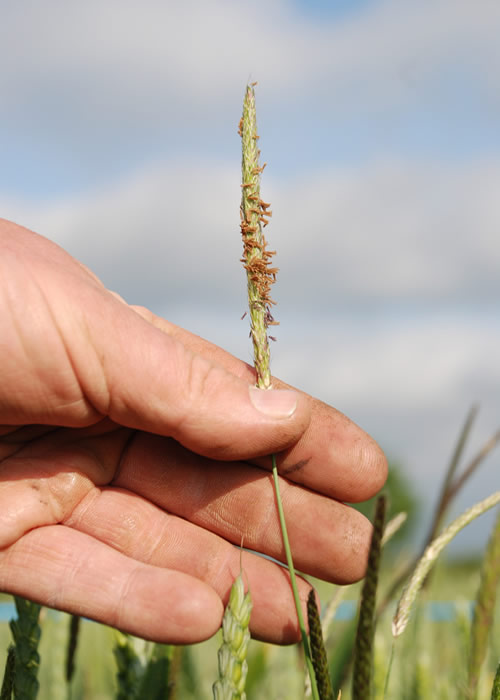
TWO new tank mix options, developed to help cereal growers fight back against black-grass problems in the face of impending withdrawals of the traditional herbicides isoproturon (IPU) and trifluralin, have been unveiled by Syngenta at this year's Cereals and Sprays and Sprayers Event (Heath Farm, Leadenham, Lincolnshire, 11 and 12 June).
Developed for use in winter wheat and winter barley, and based on the residual herbicide Defy, trials show the mixtures achieve new standards of black-grass control from a pre-emergence treatment, says Syngenta technical manager Iain Hamilton.
They also add to the existing line-up of Defy tank mixes against other grass weeds, he says, including non-IPU tank mixes for annual meadow-grass, announced by Syngenta last year.
"The withdrawals of IPU and trifluralin will create a major void in growers' grass weed herbicide armouries when the end of their sales comes into effect later this year," explains Mr Hamilton. "In the case of trifluralin, 20 September 2008 marks the date when sale and supply by distributors must end. For IPU, 30 September 2008 is the final date for distributor sales.
"Clearly, replacement herbicide strategies will be urgently needed. Fortunately, although black-grass problems are worsening, the buoyant grain prices make protecting yield through effective control even more worthwhile. From our trials, the typical payback from black-grass control increases from £187/ha to £350/ha as grain price increases from £80 to £150/t.
"With the loss of IPU and trifluralin, pre-emergence herbicide mixtures are set to play an even more important role."
In line with this, Mr Hamilton says the new Defy tank mixtures not only avoid the need to use IPU or trifluralin, but also provide high levels of black-grass control.
Based on results, he says the first new tank mix of 5 l/ha of Defy with 0.1 l/ha of diflufenican will become the company's core new pre-emergence recommendation against black-grass, and gave an impressive 93% average control of black-grass plants across multiple trials. That was even before a post-emergence herbicide was applied.
This compared with around 90% control where a standard pendimethalin with flufenacet herbicide mixture was used at 4 l/ha, he says.
"For tougher black-grass situations, our second new tank mix option of 4 l/ha of Defy mixed with 0.4 l/ha of a diflufenican / flufenacet product boosted control to 96% in the same set of trials.
"The benefit of using Defy as the starting point for a pre-emergence strategy is that it's not only proven against black-grass, rye-grass and annual meadow-grass, but is also unaffected by target site resistance and classed as low risk for metabolic resistance.
"As a single product, growers have the freedom to add the tank mix partner which best suits their weed difficulty and weed spectrum.
"Also, diflufenican is being increasingly recognised as having useful pre-emergence black-grass activity and its contribution to black-grass control in the new tank mixtures shouldn't be underestimated. In trial plots, it added around 10% black-grass control as part of a Defy mixture," he adds.
The new tank mixtures also fit alongside a lower dose option for Defy of 1.5 to 2.0 l/ha mixed with 0.1 l/ha diflufenican where annual meadow-grass and broad-leaved weeds are the main problems in winter wheat and winter barley, Mr Hamilton points out.
